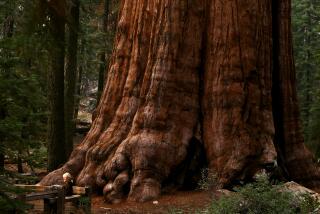THE GREAT OUTDOORS : Danger: Toxic Tundra Ahead
- Share via
In 1980, Ronald Reagan got a lot of flak when he implied that plants were a cause of air pollution. But the former President now may have some scientific support for his claim. For the last decade, Walter Oechel, a San Diego State University biology professor, has been leading a team of scientists measuring gases absorbed and released by trees and plants in Alaska. Oechel’s findings could send environmentalists reeling.
According to Oechel, the vegetation in the northern Alaskan tundra is now emitting, rather than storing, carbon dioxide--the gas responsible for global warming. Historically, Arctic soil has collected carbon dioxide; now, due to the greenhouse effect, many regions are warmer, lowering the water table and accelerating soil decomposition. Photosynthesis cannot keep up and the vegetation winds up conducting CO2 as well as producing oxygen. But don’t blame it on the trees and plants. “We caused this by putting so much carbon into the atmosphere in the first place,” Oechel says.
The implications of the professor’s findings are enormous; what’s happening in Alaska, he says, could accelerate global warming worldwide. In fact, he says, it is very likely that trees in the boreal forest, which stretches through Alaska, Russia, Canada and Scandinavia, are also emitting CO2. The forest is, in fact, the site of his next study.
Up to now, Oechel laments, the United States has been a “slow player” in the movement to restrict or reduce carbon dioxide emissions. But he hopes things are changing. “I think the fact that we have a new Administration now that has shown more of a concern for the environment is a positive sign,” he says.
And no, the solution is not to cut down all the trees.






